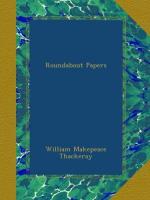We have all admired the illustrated papers, and noted how boisterously jolly they become at Christmas time. What wassail-bowls, robin-redbreasts, waits, snow landscapes, bursts of Christmas song! And then to think that these festivities are prepared months before—that these Christmas pieces are prophetic! How kind of artists and poets to devise the festivities beforehand, and serve them pat at the proper time! We ought to be grateful to them, as to the cook who gets up at midnight and sets the pudding a-boiling, which is to feast us at six o’clock. I often think with gratitude of the famous Mr. Nelson Lee—the author of I don’t know how many hundred glorious pantomimes—walking by the summer wave at Margate, or Brighton perhaps, revolving in his mind the idea of some new gorgeous spectacle of faery, which the winter shall see complete. He is like cook at midnight (si parva licet). He watches and thinks. He pounds the sparkling sugar of benevolence, the plums of fancy, the sweetmeats of fun, the figs of—well, the figs of fairy fiction, let us say, and pops the whole in the seething caldron of imagination, and at due season serves up the pantomime.
Very few men in the course of nature can expect to see all the pantomimes in one season, but I hope to the end of my life I shall never forego reading about them in that delicious sheet of The Times which appears on the morning after Boxing-day. Perhaps reading is even better than seeing. The best way, I think, is to say you are ill, lie in bed, and have the paper for two hours, reading all the way down from Drury Lane to the Britannia at Hoxton. Bob and I went to two pantomimes. One was at the Theatre of Fancy, and the other at the Fairy Opera, and I don’t know which we liked the best.




